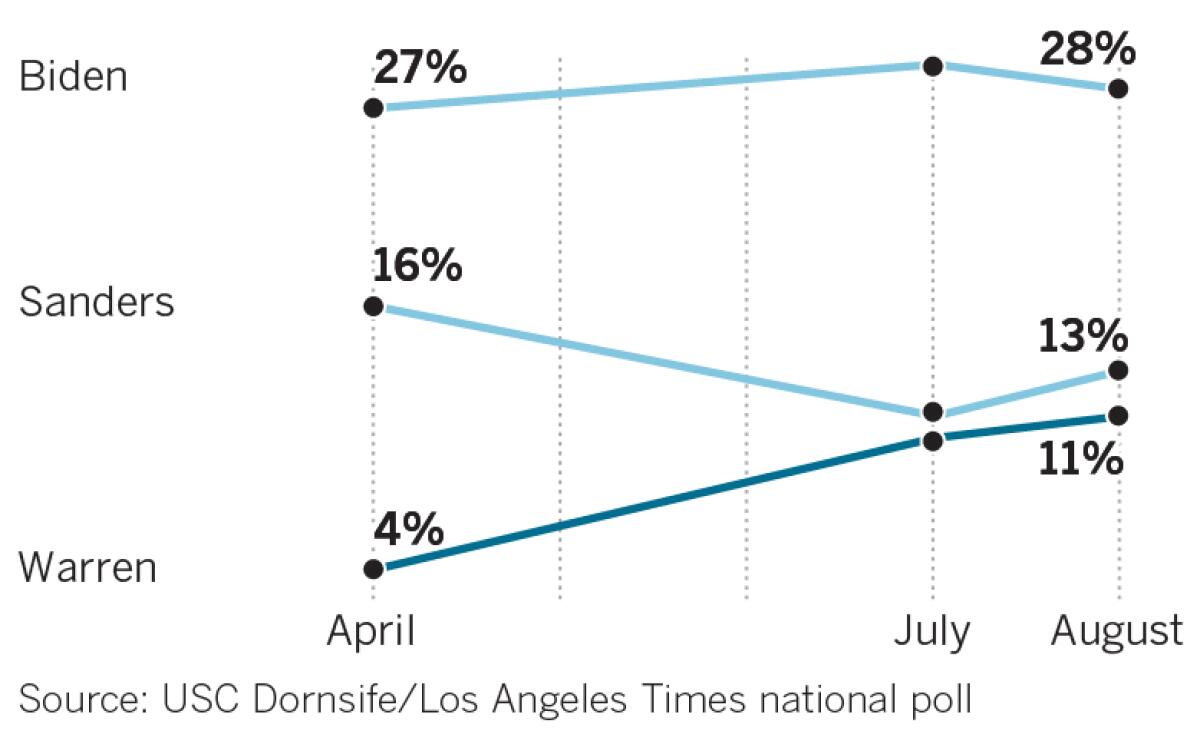Anti-incumbent fever. The Year of the Woman. Coattails and skirt-tails. Yes, the pundits are in a lather with prognostications of a blitzkrieg this year against the powers-that-be in American politics. But will this sortie swoop down on Orange County’s long-entrenched state Legislators?
Don’t count on it, say the region’s Republican hierarchy. They insist the hefty contingent of GOP incumbents in Orange County is just too powerful. Even some leaders of the second-fiddle Democrats, who hold only one state elected office in Orange County, say privately that they don’t expect to make much headway against the GOP.
But such behind-the-scenes sentiments haven’t stopped most Democratic challengers–as well as Libertarians and other third-party candidates–from mounting spirited grass-roots campaigns and espousing the optimistic view that in this wacky political season, anything could happen.
These Democrats suggest they could benefit by hitching a ride on the coattails or skirt hems of their party’s candidates at the top of the ticket. Some of the challengers also predict the Democrat’s surge in voter registration, which saw the party begin to close the GOP’s huge lead, may signal the beginnings of change in the political climate of Orange County.
The Democrats also predict that the electorate’s grumpy feelings about the Legislature–fueled by the nationally embarrassing budget stalemate over the summer–will spark an anti-incumbent wildfire that could hurt GOP candidates in Orange County.
“I think this is the year,” enthused Jim Toledano, an Irvine attorney running against longtime Assemblyman Gil Ferguson (R-Newport Beach) in the 70th District, where Republicans outnumber Democrats nearly 2 to 1. “I get a feeling voters will be picking and choosing this year. And an awful lot of them will be going anti-incumbent.”
Republican officials just aren’t buying it. They admit that anti-incumbency could shave a few points off the usual electoral landslides their candidates enjoy, but say the GOP isn’t taking any chances. The Republicans, after all, still enjoy a hefty edge in fund raising and party registration in nearly all the districts.
“We don’t see any upsets, but this is not a good year to be resting on your laurels,” said Greg Haskin, Orange County’s Republican executive director. “Most of our Republican incumbents are taking it very seriously and working hard to get reelected.”
A look at Orange County’s races for the Assembly:
67th Assembly District
Assemblywoman Doris Allen (R-Cypress) had to engage in a tumultuous primary campaign to defeat colleagues Tom Mays (R-Huntington Beach) and Nolan Frizzelle (R-Fountain Valley) after redistricting put all three in this coastal Orange County district anchored by Huntington Beach.
Although the five-term assemblywoman heads toward election day with a 51.5% to 35.4% registration advantage for the GOP, Democrat challenger Ken LeBlanc is bullish on his chances.
“I’m doing everything I can to position myself for lightning to strike,” LeBlanc said. He is tapping into the 700 volunteers working out of the Democratic Party’s west Orange County office. LeBlanc also notes that much of the newly reapportioned district is new to Allen. In the meantime, LeBlanc has tried to characterize himself as a maverick, “not your usual liberal Democrat.”
LeBlanc also makes a fuss over money funneled to Allen during the primary by education and labor groups that have traditionally supported Democrats. It has prompted an unusual charge: LeBlanc, the Democrat, has tried to tie Allen to powerful Democratic Assembly Speaker Willie Brown.
“Doris made a deal with Willie obviously,” LeBlanc contends. “If Doris wants to sell herself to the highest bidder, she can do that.”
Allen bristles at such accusations, saying Brown had nothing to do with the contributions, which she contends were sparked by her support of education.
“There was never a deal with Willie, never a discussion,” she said. “In fact, Willie was mad that they were putting money into a Republican district.” Allen also said LeBlanc “hurts himself worse than he helps himself” by making such charges.
She hopes to return to Sacramento and work on finding “a balance between the economy and environment.” Her big effort in recent years has been to outlaw the use of gill nets by commercial fishermen.
Libertarian Brian Schar, an aerospace engineer, says meaningful budget reform needs to start with public schools and supports the proposed voucher system allowing parents to more easily send their children to private schools. Like other Libertarians, he wants to cut taxes and regulations to help improve the state’s business climate.
68th Assembly District
Curt Pringle, Orange County’s former assemblyman, is back.
After one term in the Legislature, Pringle was defeated by Democrat Tom Umberg in an unruly 1990 race. Reapportionment shifted Pringle into a new district, and here he is again in the 68th.
His Democratic opponent, Linda Kay Rigney, is running a campaign long on hustle and short on cash. Nonetheless, Rigney sees signs of hope. The central county district–anchored by Garden Grove, Westminster and Anaheim–isn’t nearly as lopsided as some (it’s 46.2% Republican and 42.2% Democratic). With no other candidate in the race, Rigney hopes the 11% who aren’t followers of the major parties will vote for her.
Moreover, she thinks the area’s residents, irked by the lingering recession, will be ready to revolt against the GOP hierarchy. She also expects to gain votes in this political “Year of the Woman” and perhaps even ride the hems of Feinstein and Boxer.
A longtime Democratic activist and school instructional aide, Rigney hopes to take “drastic measures” to spur the economy by streamlining the regulatory process and reforming workers compensation.
Pringle, 33, has mostly focused on his desire to work at reducing the size of government. Like other Republicans, he wants to roll back regulations to “bring the economy out of the doldrums.”
He also wants to overhaul the worker’s compensation system to outlaw stress disability claims and make cuts “in every area of the budget.” Noting that many politicians “shy away” from talking about cuts in education, Pringle stressed that the problem isn’t a lack of money but a bloated education bureaucracy.
69th Assembly District
With a Democrat majority, this district is an anomaly in the GOP bastion of Orange County. Assemblyman Tom Umberg (D-Garden Grove) enjoys a 54% to 36% registration edge over the Republicans.
But local Republicans would like nothing better than to unseat Umberg, and they feel they’ve got just the candidate to do it–Jo Ellen Allen, a conservative former associate professor of political science and champion of “traditional family values.”
Both sides are armed for war. Allen has raised about $200,000 so far, while Umberg has amassed $300,000. There’s even been a few early skirmishes.
Allen has made a point to regularly blast Umberg for his vote in 1990 to retain Willie Brown as speaker of the Assembly, a post the San Francisco Democrat has held for a dozen years to the ever-increasing irritation of frustrated Republican politicos.
Umberg’s campaign, meanwhile, has been quietly making a fuss over Allen’s role for the past decade as president of the California chapter of Eagle Forum, a conservative group headed by Phyllis Schlafly, the right-wing national celebrity most prominent for her stand against the proposed equal rights amendment and other feminist causes.
David Keller, the Libertarian candidate, wants to privatize the public school system and many other government services. He also would work to abolish the South Coast Air Quality Management District as well as agencies such as the Iceberg Lettuce Commission and the state Arts Council. Keller favors a flat-rate personal income tax for the state and wants to reduce sales taxes. He also wants to legalize drugs, saying that “the drug war is diverting police and court resources from real crime, serious crime.”
70th Assembly District
Like other Republican incumbents, Assemblyman Gil Ferguson enjoys a decided registration advantage (56.1% GOP to 29.7% Democratic), but challenger Jim Toledano remains confident.
Toledano and his volunteers have been walking precincts for more than two months. He has also raised more than $50,000 and figures he will capture GOP voters who supported Costa Mesa Mayor Mary Hornbuckle, who gave Ferguson a rough fight in the Republican primary.
He contends the state has “systematically shortchanged education,” turning a “first-rate education system into one that hasn’t done the job.” Business, in turn, has suffered because of a dearth of well-educated workers, he said.
The Democrat is also talking tough.
“Gil Ferguson has an extreme right-wing ideological agenda that he pushes at every opportunity,” Toledano said. “He is focused on winning ideological points on the right and not in dealing with problems.”
Ferguson scoffs at Toledano’s critique. Although the challenger insists he would vote to oust Democrat Willie Brown as speaker of the Assembly, Ferguson isn’t buying it.
“He’s a typical Democrat opponent,” Ferguson said. “They distort your record and say bad things about you. But they never tell the constituents that they’re going to go up to Sacramento and join Willie Brown.”
Ferguson said he’s happy to run on his record, noting that he worked to get an independent Caltrans district office in Orange County and served on a blue-ribbon task force that successfully pushed a highway funding measure that fueled the current freeway building binge.
Libertarian Scott Bieser, meanwhile, is running as a protest candidate to give voters who are “fed up with Republicans and Democrats” another choice. He wants to cut government by about 80%, comparing politicians’ thirst for tax dollars to “a person addicted to a drug.”
71st Assembly District
Assemblyman Mickey Conroy (R-Santa Ana) has a bigger registration advantage than any Republican in the state (58% to 29.2% for the Democrats). But he’s not taking chances in this unpredictable political year.
Conroy is running on his record–he managed to get 24 bills signed into law since he won a special election for the seat last year. They’ve included a domestic violence bill, a law making it a crime to deface veterans’ memorials and legislation repealing the tax on white canes for the blind.
His Democratic opponent, Bea Foster, hopes to parlay her many years of activism in community politics into votes. She helped push through Orange County’s TINCUP campaign finance reform measure, was active in the unsuccessful effort to incorporate north Tustin and helped block plans for extension of the Garden Grove Freeway into the Tustin hills.
Foster wants to see the state’s health care system improved and boost funding for education, saying “one of our gold mines is going down the drain.” She also wants to push for retraining of aerospace workers and others out of jobs because of the economy.
72nd Assembly District
Like many other heavily Republican districts, this race could turn into a coronation for powerful Assemblyman Ross Johnson. The former Assembly minority party leader enjoys a 55.6% to 37.7% registration advantage over the Democrats in his district. Moreover, Democratic challenger Paul Garza Jr. is running a low-key campaign.
Johnson hopes to fundamentally restructure state government, cutting regulations and spending fewer tax dollars. He wants to rework the welfare system, shifting the emphasis to helping people become “fully functioning, productive members of society.”
Garza, a public affairs consultant and former Orange County Democratic Party executive director, supports abortion rights, wants to see the state’s health care system revamped to improve care for all and wants the welfare system reformed to provide education and vocational skills.
Libertarian Geoffrey Braun favors school vouchers, wants the state’s workers’ compensation system revamped and backs campaign finance reform, saying that big political contributions are undermining the ability of government to truly serve the people.
73rd Assembly District
Up until a few weeks ago, this race appeared headed toward a historic intraparty showdown. But then Republican nominee Bill Morrow and the opponent he defeated in the primary, Laguna Niguel Councilwoman Patricia C. Bates, made up and held a peace powwow with GOP officials.
Democrat Lee Walker isn’t holding back the punches, calling Morrow an “ultra-conservative, right-wing Christian” who is “out of the mainstream of Republicanism.”
Walker, a college professor who has modeled himself as the “education candidate,” also has blasted Morrow for raising more than $275,000 in contributions, much of the money from powerful Sacramento politicians and political action committees. “I could call him Mr. Pac-Man because he’s got so many PACs giving him money,” Walker said.
Morrow counters that “people who contribute to my campaign do so because they know I stand for certain principles that are consistent with their own beliefs” and stressed that he has received many small-dollar contributions from the general public.






